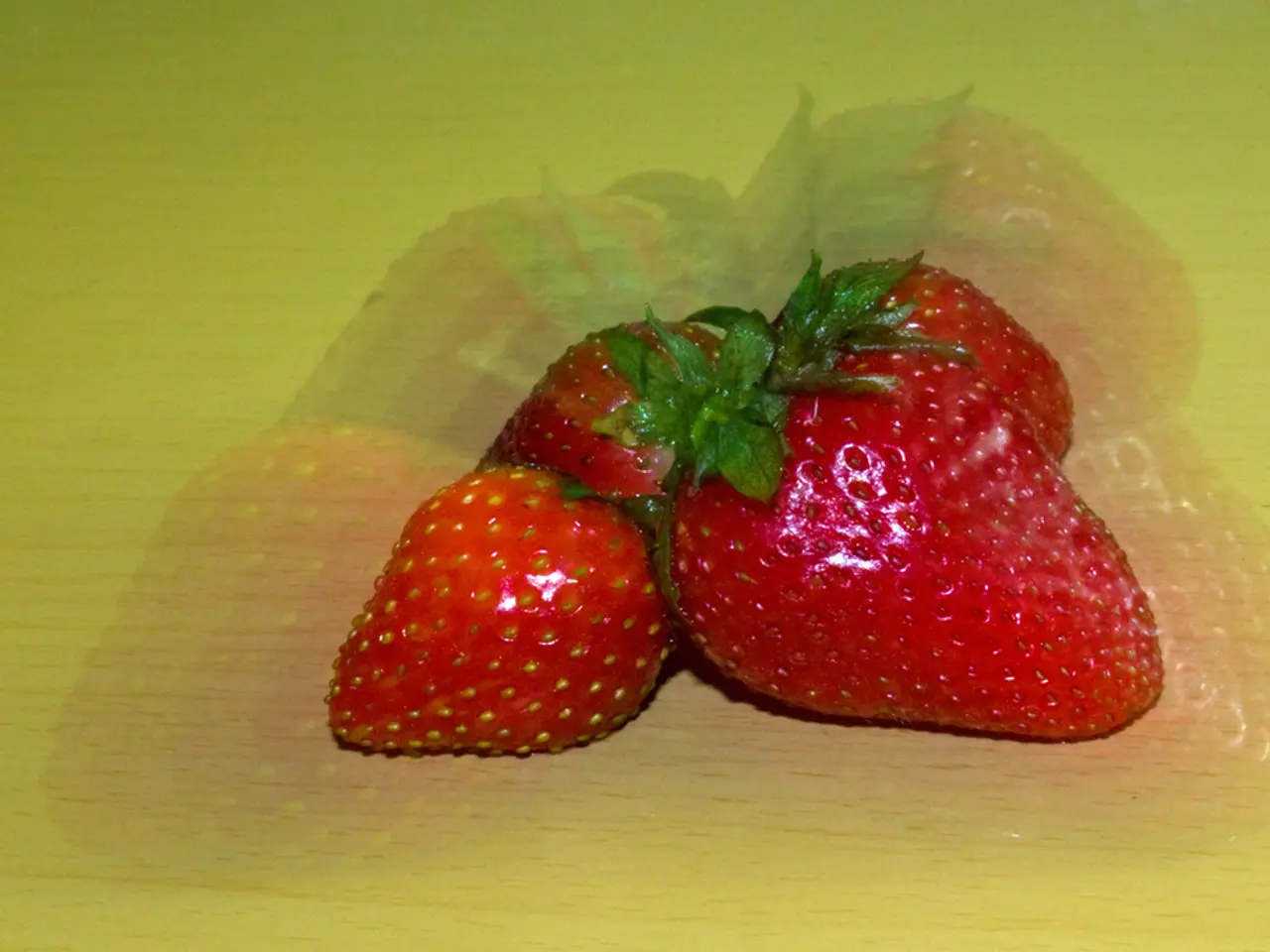Automated machines pick, gather, and store strawberries
The SHIVAA robot, an artificial intelligence (AI)-driven machine designed for open-field strawberry harvesting, is currently under development and testing in real-world conditions at the Glantz strawberry farm in Hohen Wieschendorf, Germany. This project is a collaboration between the German Research Center for Artificial Intelligence (DFKI) and the Hamburg University of Applied Sciences, with the region of Mecklenburg-Vorpommern also involved[1].
Distinctive Features and Capabilities
Unlike previous strawberry-harvesting robots primarily designed for greenhouses, SHIVAA is tailored for outdoor use. It can operate autonomously at night using constant artificial light to enhance its image processing, making it capable of working safely alongside farmers. SHIVAA is also equipped with built-in collision sensors to ensure a safe working environment[1].
Economic and Market Impact
The high labor costs in strawberry production, which account for about 60% of production expenses at the partner farm, are a significant concern. By reducing labor costs and preventing crop losses, SHIVAA could help lower production costs, potentially leading to cheaper strawberries in supermarkets. This efficiency could also enable local farms to compete more effectively with imports[1].
Human Workforce Interaction
The technology is intended to support and relieve human workers rather than replace them. SHIVAA is designed to facilitate integrated operation alongside manual pickers without the need for protective barriers[1].
Timeline and Future Prospects
Project leadership estimates several more years of development are needed before the robot can be mass-produced and widely deployed in agricultural fields, projecting up to seven years before its widespread commercial use[1].
SHIVAA's Performance
During testing, SHIVAA can harvest about 15 kilograms of fruit per hour, and it is capable of working for at least eight hours at a time. Moreover, the deployment of SHIVAA in larger quantities on fields could take up to seven years[1].
Potential Expansion
The development of Shiva is not limited to strawberries; it could potentially be transferred to the harvesting of other fruit varieties[1]. SHIVAA's ability to work in open-field cultures and its versatility make it a promising technology for various agricultural applications in the future.
[1] Source: DFKI, Hamburg University of Applied Sciences, and Glantz strawberry farm.
- Engaging in the community, the local farmers can benefit from the implementation of the community policy that encourages vocational training programs for their workers, equipping them with skills for operating and maintaining advanced technology like the SHIVAA robot.
- As the lifestyle of urban consumers shifts towards a focus on organic, locally-sourced food-and-drink, the widespread use of AI-driven robots like SHIVAA may facilitate the growth of domestic agriculture, promoting sustainable food production and reducing reliance on technology in the art of farming.




